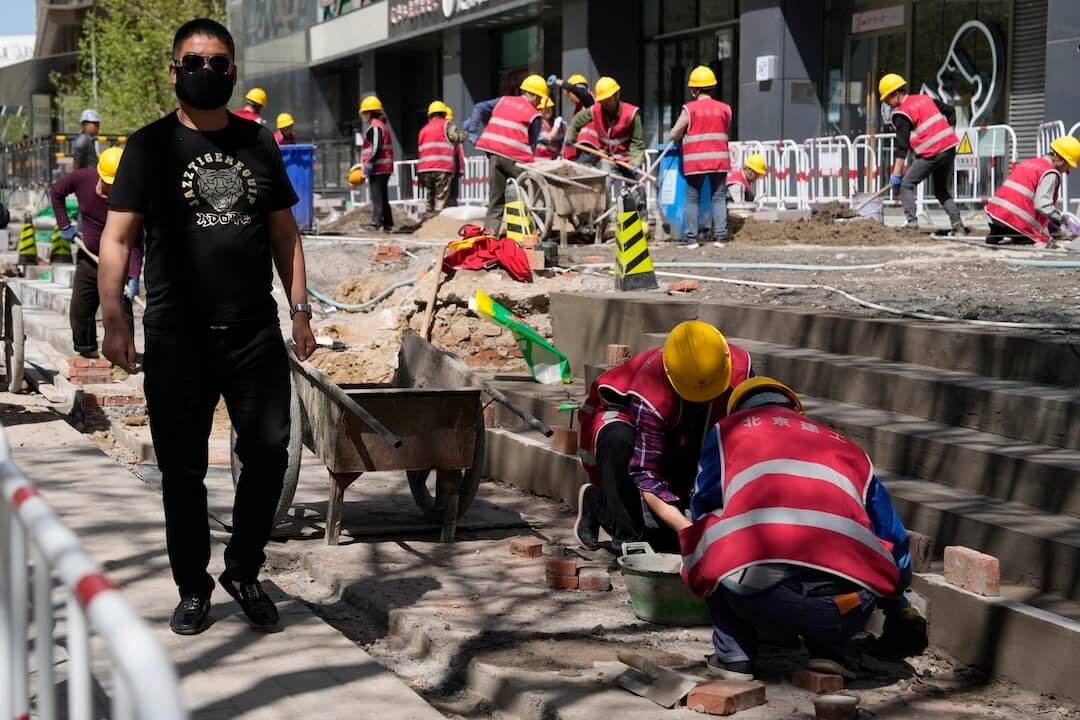China’s population is poised to age dramatically in the coming years, posing financial strains to retirement pensions. But in recent remarks, President Joe Biden said this pain had already occurred.
Biden, speaking to supporters in Seattle on May 12, said the U.S. maintains its strong economic position in part because of its openness to outsiders. “We’re not xenophobic,” he said. “We allow people to come in and work. We grow our economy.”
He contrasted the United States’ demographics to China, the world’s second-biggest economy and arguably the U.S. biggest economic rival.
“Look at China,” Biden said. “China’s in a situation where they have more retired than working. They don’t know what to do about it.”
This reversal is poised to happen — but in the early 2050s, about a quarter century from now.
For now, “China’s aging crisis is still less severe than that of the United States, so unsurprisingly, its economic growth rate is still higher,” Fuxian Yi, a senior scientist in obstetrics and gynecology at the University of Wisconsin-Madison and a specialist on Chinese demographics, told PolitiFact.
But within a decade or so, “all of China’s demographic parameters will be worse than those of the United States, and its economic growth rate will begin to be lower than that of the United States,” Yi said.
The White House did not provide additional information when we inquired. Biden said something similar at least once before, during a February 2021 town hall in Milwaukee with CNN’s Anderson Cooper.
Yi’s data show that today, China is home to 816 million people ages 16 to 59, and almost 283 million who are age 60 and older. That’s about 2.9 working-age people for every 60-or-older person.
China has different retirement ages — 60 for men, 55 for white-collar women and 50 for working-class women. So, changing the age groups used in this calculation can modestly shift the year these numbers reach parity.For these age brackets, the numbers equalize in 2052.
But whatever the age groups used, “President Biden’s remarks are indeed overstated and premature,” Yi told PolitiFact.
By contrast, the United States has about 193 million people ages 19 to 64, compared with more than 56 million people age 65 and older. In the U.S., the full retirement age is 66 or 67 years old, depending on the person’s birth year.
Other ways of slicing the data also foretell the coming fiscal squeeze on pensions in China, which has been exacerbated by the country’s one-child policy that was enforced from about 1980 to 2015.
China’s median age — which had been under 20 in 1971 — is currently about 43. But it’s set to reach 60 in 2060, and 64 by century’s end.
And the ratio of Chinese workers supporting each retiree is set to plunge.
Today, China has about 4.4 working-age people (that is, aged 18 to 64) for every person who is 65 or older. That ratio is set to fall below 2-to-1 by 2040 and below 1-to-1 by 2081.
By comparison, the United States is in worse shape than China on this metric today; the current U.S. ratio of workers to retirees is about 2.6-to-1. But the U.S. curve is projected to level out rather than fall like China’s. China’s worker-to-retiree ratio is poised to sink below 2-to-1 in 2041 — a level that the U.S. is not forecast to fall below through the end of this century.
China’s demographic quandary will have economic consequences, Yi said.
“In the future, the economic gap between elderly China and middle-aged United States will again widen,” he said. “If the United States is overtaken as the world’s largest economy, it will be by India, not China.”
Our ruling
Biden said, “China’s in a situation where they have more retired than working.”
That’s not the case today; it’s projected to happen about a quarter century from now, depending on which age brackets are used for the calculation.
We rate the statement False.
This fact check was originally published by PolitiFact, which is part of the Poynter Institute. See the sources for this fact check here.







